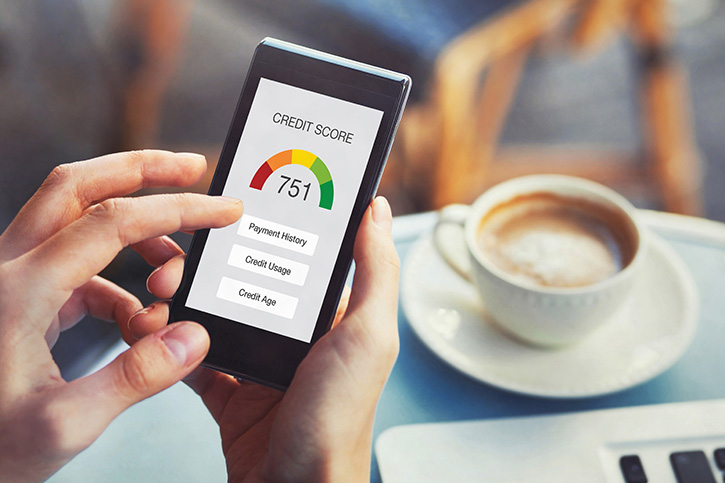New year, new goals, right? When it comes to personal goal-setting, creating financial goals can be one of the most meaningful things you can do for yourself and your family.
Why? Because money may not be everything, but it can buy us choices. Where we live, what we do for work (and how much we work), what hobbies we’re able to pursue, and whether we’re able to help others in our lives often have strong ties to our financial picture. So, do yourself a favor in 2024 and set some financial goals you can crush.
No matter what your financial goals, remember that a goal without a plan is just a dream. Cheesy? Yes. True? Yes.
That’s why we’re here to show you not just the value of personal goal-setting, but a road map for killing those financial goals.
All Big Dreams Start Small
Whether your goal is to travel the world or pay off student loans, chances are this goal is more complicated than simply snapping your fingers and making it so. If that were the case, it wouldn’t be part of your list of goals. It would be on a to-do list.
So let’s acknowledge upfront that some of these financial goals can seem quite lofty. After all, it takes a lot of financial planning to, say, buy a home or live debt-free. But here’s the thing: Once you set a goal, you can work backward to see how you can achieve it.
For example, let’s say you need $18,000 to pay off your debt this year. That’s $1,500 per month, or about $750 every two weeks. If you know that you can afford to set aside $650 of every paycheck toward paying back debt, that leaves $100 per month you still need to find—perhaps through scrimping, selling, or a side hustle.
Breaking your goal into a smaller time frame helps you see how you can get there, and whether it’s really achievable.
Using SMART Goals
Using the SMART system to achieve your goals is extremely powerful. It’s all about breaking these larger financial goals into bite-sized, achievable pieces.
SMART stands for specific, measurable, achievable, relevant, and time-bound. Sounds fancy, but it’s really just a practical way to turn dreams into reality. Here’s what each component means.
- Specific: Define your goal as precisely as you can. Instead of saying, “I need to get out of debt,” perhaps make it, “I want to pay off my credit card debt in a year.”
- Measurable: Make sure you can track your progress toward your goal. For example, “On the first of every month, I’ll send $200 to the credit card company.”
- Achievable: Make sure your goal is realistic for you. And then outline exactly how you plan to save the money. For example, to save that $200, maybe you commit to stopping buying coffee outside the house and making dinner at home six days a week.
- Relevant: Ensure that your financial goals align with your personal life. If you’re ultimately dreaming of homeownership, maybe your priorities are to pay down debt and work on your credit score, rather than saving up for a vacation.
- Time-bound: Give yourself a deadline. Saying, “I’ll have $5,000 saved for a down payment in 12 months,” helps you think about what that means on a weekly and monthly basis. It also creates a sense of urgency.
Financial Goals That Are Worth Setting
Let’s get one thing straight: Any goal that’s worth it to you is worth setting. Want to save money so you can buy a piece of artwork? Great. Need extra cash because your living expenses are increasing? Fabulous. Just really love to see a fat number in your savings account? We totally get it.
No two goals are exactly alike because the people setting them are all different. Nevertheless, when it comes to personal goal-setting, there are some financial goals that come up more than others. Here are some ideas for you.
Creating a budget
Perhaps you’re not sure what kind of financial goals to set because you’re not really sure where your money is going. If that’s the case, getting a handle on that is a valid goal for 2024!
Here’s a simple way to get started:
- List all your monthly income. List all your sources of income, including your salary, freelance work, rental income, and any other sources of money.
- List all your fixed monthly expenses. Fixed expenses are regular and consistent, like rent, utilities, loan payments, and other monthly obligations. For annual fixed expenses like property insurance, divide the total number by 12.
- List all your variable monthly expenses. Estimate the expenses that can vary from month to month, such as groceries, gas, clothing, entertainment, and dining out.
- Start tracking your spending. Make a spreadsheet to keep track of your actual spending in all the categories you’ve listed. This will give you a clear picture of where your money is going right now.
Once you have some basic information, you can start thinking about areas where you might be able to cut back or set realistic spending limits for yourself.
If you struggle to create a budget—or to stick to one—there are also many apps you can use to keep yourself on track.
Becoming debt-free
Ah, the “D” word. Credit cards, student loans, medical bills, mortgages, car payments, you know the drill. Being debt-free is like shedding a financial weight.
If this is one of your personal goals, then a good plan can be to tackle high-interest debts first. That’s because those interest rates are costing you the most money. You may also want to look into consolidating debt or opening a credit card that offers a 0% APR on balance transfers.
Only consider the credit card option, however, if you’re positive you can control your future spending. Part of the goal of being debt-free is improving your credit score. Getting into even more credit card debt is the opposite of what you want and can prevent you from reaching your financial goals.
For more help on paying off debt, see our blog post with eight practical ideas here.
Saving money
When it comes to saving money, the old set-it-and-forget-it method can be great. An easy way to do this is to auto-allocate a specific amount of money to be transferred to your savings account once your paycheck is deposited.
This is honestly the best kind of New Year’s resolution. You can take some time in January to set things up when your motivation is high, and then you’re done for the year. Goal achieved!
The other great thing about this strategy is it can help you work toward a long-term goal like buying a house, but it’s also great for short-term financial goals like, say, Taylor Swift concert tickets.
And you don’t have to have a spending goal in mind at all! If you want to save money simply to watch your savings account grow, that’s not only an achievable goal, it’s a brilliant one!
Improving your credit score
The credit score: also known as your financial goals’ gatekeeper. We don’t have to tell you that a great credit score opens doors—namely, to the ability to make big purchases by taking on more debt. This privilege can be yours if you work on your credit score.
Remember the SMART goals here. Before you can set a specific goal, you need to know what your starting score is. (You can request a free credit report here.)
Say you have a credit score of 650, and you want to get it up to 700 by the end of the year. Here are some achievable ways to do that:
- Be sure to pay your bills on time. This is crucial, so set up reminders or automatic payments if necessary.
- Keep your credit card balances low. Aim to keep your credit card balances at no more than 30% of your credit limit.
- Keep old accounts open, and avoid opening too many new accounts. The length of your credit history is important. So having long-standing accounts helps you, while opening a lot of new accounts is viewed as risky behavior.
- Seek professional help. If you want to improve your credit score before buying a home, a Preferred Rate Mortgage Advisor may be a great resource for getting personalized help on this goal.
Saving for a down payment
One of the most common financial goals involves real estate. This might take the form of buying your first house, a vacation property or adding an investment property to your portfolio. In any case, a down payment will be needed, making this one of the great personal goals for 2024.
Start by setting a specific savings goal for your down payment, then see where you can save—and where you can earn more money—to hit this target. It’s always great to put 20% down if you want to snag better mortgage rates and avoid private mortgage insurance (PMI), but it’s not required. Consult with a Preferred Rate Mortgage Advisor to see if you qualify for down payment assistance and what a good down payment savings goal might be for you.
Saving for retirement
It’s time to play the long game. Long-term financial goals keep your eye on the prize. If your dream is to work less or retire on a beach somewhere, then now is the time to start saving for it. If you haven’t done it already, set up a retirement account, such as a 401(k) or an IRA.
As you begin to save for retirement, you’ll see what compound interest can do to the money you’re stashing away. As you watch this money grow, you can feel confident knowing you’re working toward being financially secure for the rest of your life.
Making career goals a reality
Part of being financially secure is the ability to pursue what’s important to you. When you’re not tied to the punch clock, you can achieve the career goals of your dreams.
For example, maybe you’d like to save enough money to return to school part-time to learn a new skill. Or maybe you have an idea for an entrepreneurial adventure and need startup funding. Or perhaps your goal is to be able to quit your day job entirely to turn your passion project into a career.
The first step, as always, is to write out your plan, including how much it is likely to cost and how long it will take to save for it. But whatever your goals, the ability to invest in yourself will never go out of style.
Celebrate Wins of All Sizes
A large part of personal goal-setting can involve sacrifice. You have to devote the time, money, and energy to creating specific goals. But you also need realistic, actionable plans to help get you there.
Keep in mind that the payoff doesn’t have to be years down the road when you achieve long-term financial goals. Celebrate the short-term goals as well. Did you create a plan and exceed your savings goal in the first month? That deserves some acknowledgment. Plus, recognizing your victories can keep you motivated for the long haul.
Setting achievable financial goals doesn’t have to be a buzzkill. Instead, it’s a positive step toward realizing your dreams.
And always remember, we’re here to help. Whether you’re having trouble establishing goals, aren’t sure of the best ways to save money, or want to understand the SMART goals system better, we’re happy to assist however we can.









